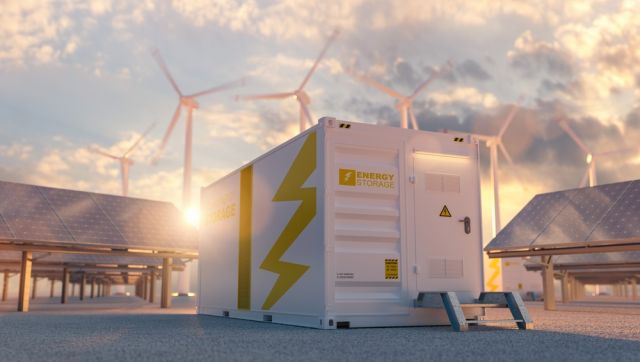
U.S. energy storage capacity could expand to more than 30 gigawatts by year-end 2024, the EIA says. (Source: Shutterstock)
U.S. battery storage capacity could nearly double by the end of 2024 compared to last year if developers bring planned projects online, according to the U.S. Energy Information Administration (EIA).
The growth, which would see battery storage capacity jump to more than 30 gigawatts (GW), is expected amid efforts to improve grid reliability as electricity demand increases.
“Planned and currently operational U.S. utility-scale battery capacity totaled around 16 GW at the end of 2023,” the EIA said Jan. 9. “Developers plan to add another 15 GW in 2024 and around 9 GW in 2025, according to our latest Preliminary Monthly Electric Generator Inventory.”
Battery storage projects, which store excess energy during off-peak times for use when needed later, have taken on a crucial role in the development of intermittent renewable energy sources such as solar and wind. In a separate report, the EIA said it expects solar electric generation to make up 7% of total U.S. electricity generation in 2025, up from 4% last year, as developers aim to bring nearly 80 GW of solar capacity online.
Leading the pack in battery energy storage capacity is California, which had about 7.3 GW of installed battery capacity as of November 2023. Texas followed with nearly 3.2 GW.
“Battery storage projects are getting larger in the United States,” the EIA added. “The Dynegy Moss Landing Energy Storage Facility in California is now the largest U.S. battery storage facility in operation in the country with 750 megawatts (MW).”
However, about half of the planned capacity installations will be in Texas. Included in the more than 300 utility-scale battery storage projects expected to go online in 2024 or 2025 are: Lunis Creek BESS SLF (Texas, 621 MW); Clear Fork Creek BESS SLF (Texas, 600 MW); Hecate Energy Ramsey Storage (Texas, 500 MW); Bellefield Solar and Energy Storage Farm (California, 500 MW) and Dogwood Creek Solar and BESS (Texas, 443 MW), according to the EIA.
Recommended Reading
TPG Adds Lebovitz as Head of Infrastructure for Climate Investing Platform
2024-02-07 - TPG Rise Climate was launched in 2021 to make investments across asset classes in climate solutions globally.
JMR Services, A-Plus P&A to Merge Companies
2024-03-05 - The combined organization will operate under JMR Services and aims to become the largest pure-play plug and abandonment company in the nation.
Chord Energy Updates Executive Leadership Team
2024-03-07 - Chord Energy announced Michael Lou, Shannon Kinney and Richard Robuck have all been promoted to executive vice president, among other positions.
First Solar’s 14 GW of Operational Capacity to Support 30,000 Jobs by 2026
2024-02-26 - First Solar commissioned a study to analyze the economic impact of its vertically integrated solar manufacturing value chain.
SunPower Begins Search for New CEO
2024-02-27 - Former CEO Peter Faricy departed SunPower Corp. on Feb. 26, according to the company.





